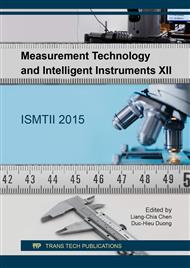p.342
p.351
p.357
p.363
p.369
p.375
p.383
p.389
p.395
Analyses of DNA Image Cytometry Uncertainty Caused by Diffractive Blurring
Abstract:
Comparison of quantitative methods for the segmentation of nuclei images is performed. A sizeable variability is typical for biological specimens and it induces the elemental uncertainty in experimental data. To remove the variability from comparison we have proposed and built the special test objects of two types simulating the nuclei images. I-type objects are test patterns as sets of circles and squares of specified dimensions in chromium films on a glass plate. II-type objects are images with brightness differentials that simulate diffractive blurring and are built up with MathCad programming environment. Test objects enable objective comparison of characteristics obtained in the course of their quantitative optical-and-structural analysis using various algorithms and programs. We found that the efficiency of the segmentation algorithm depends on diffractive blurring of the image. Specifics of Otsu’s algorithm and local algorithm of brightness gradient are analyzed for finding the segmentation threshold of digital images modeling transmission Feulgen-stained cell nuclei specimens with diffractive blurring. The performed calculations revealed that the border of geometrooptical image practically coincide with the points of inflection on the intensity distribution graph in a test-object image space. Computational experiments show that quantitative results of the morphometric image study defined by the various segmentation algorithms vary within 5%. It is established that the threshold-identifying algorithm based on the brightness gradient is preferable in the image cytometry.
Info:
Periodical:
Pages:
369-374
Citation:
Online since:
September 2017
Authors:
Price:
Сopyright:
© 2017 Trans Tech Publications Ltd. All Rights Reserved
Share:
Citation:


